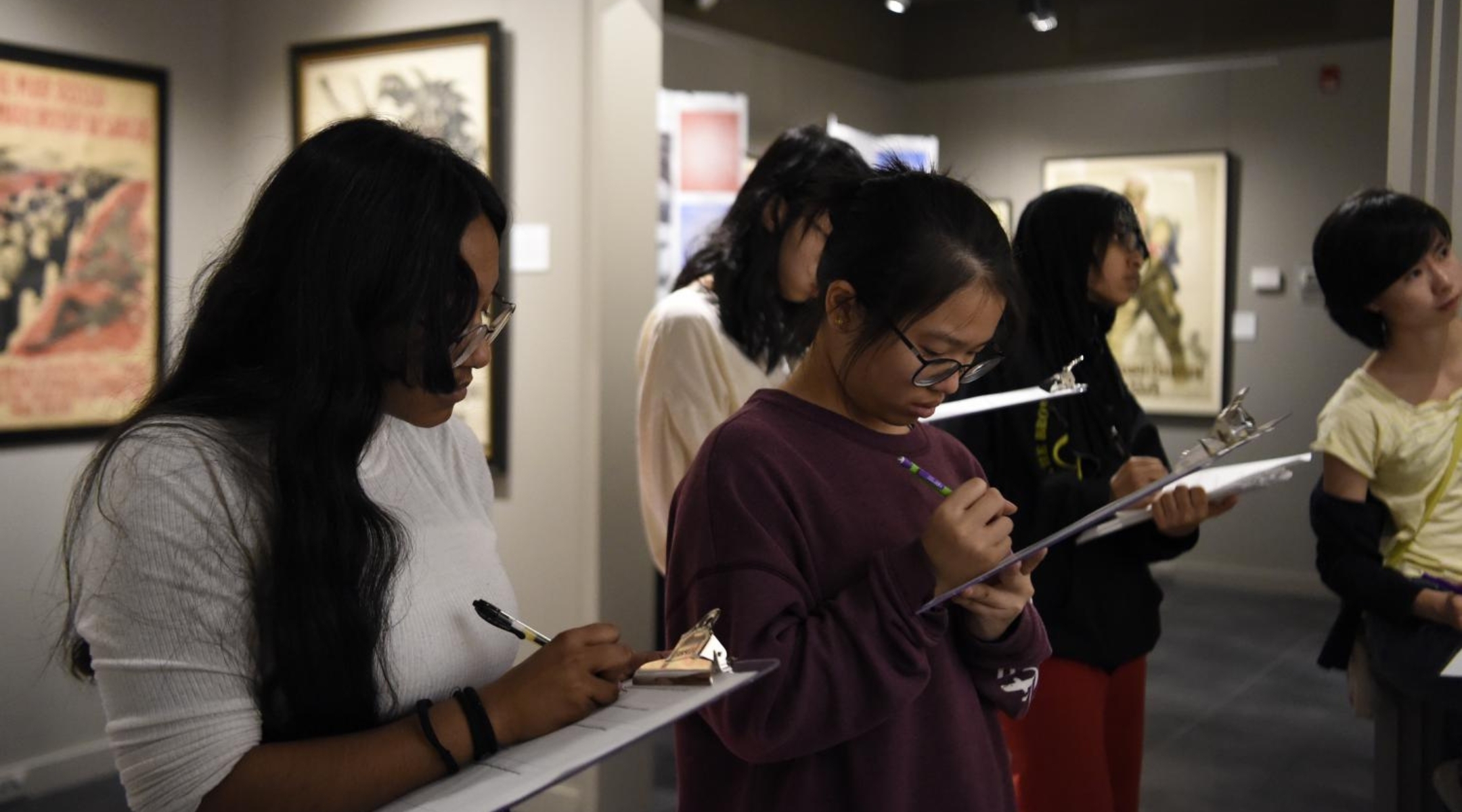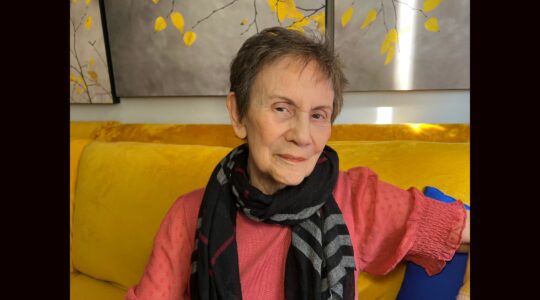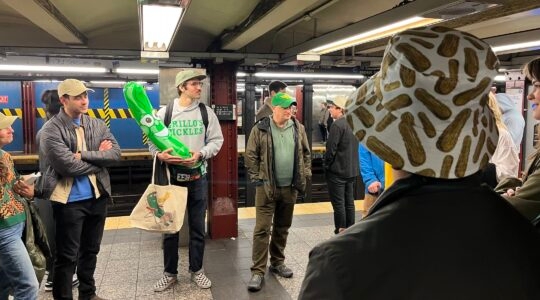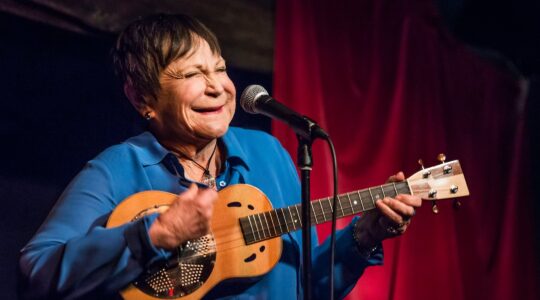This article was produced as part of the New York Jewish Week’s Teen Journalism Fellowship, a program that works with Jewish teens around New York City to report on issues that affect their lives.
The Bronx High School of Science boasts nine Nobel Prize winners and 10 Pulitzer Prize recipients among its alumni, but there’s another unique aspect of the elite school that is often overlooked: It is likely the only public high school in the United States with a Holocaust museum.
The Stuart S. Elenko Collection Holocaust Museum and Studies Center was founded in 1978 by history teacher Stuart Elenko to preserve the artifacts from the Holocaust that were saved by survivors whose children attended the school. (Bronx Science first opened in 1938 as an all-boys school, and in its early years, it primarily served Eastern European Jewish families in the Bronx). Today, the museum remains an integral part of the school, serving its 3,000-pupil community through a Holocaust Studies course, after-school programming and peer-led tours.
“As time passes from the Holocaust, kids are less connected to it,” said Violet Plotko, a senior who’s the president of the school’s Jewish Student Union, who is taking the school’s Holocaust Studies class for her third and final year. Plotko is one of 25 students in the elective course who are trained to give tours of the museum, maintain the permanent collection and curate supplementary programs. Bronx Science students can take the class for up to three years, during their sophomore, junior and senior years.
These days, with a diverse student body that is 60 percent Asian, most of the Bronx Science students who make their way through the museum do not have a personal connection to the Holocaust. “When students come down here, they are seeing Nazi uniforms, yellow ‘Jude’ stars, a KKK mask,” Plotko said. “It’s not the same as seeing pictures on a slide. It becomes real.”
The New York State Legislature mandated Holocaust education in 1994, 16 years after Elenko founded the museum, and 11 years after he started the related course.
Since then, the museum has become a defining aspect of the school’s 10th and 11th grade history curriculums. For sophomores, the tour focuses on the build-up of antisemitism in Eastern Europe throughout the turn of the 20th century, the atrocities of the Holocaust, and the aftermath for the Jewish community. The juniors’ tour is geared toward America’s involvement in World War II.
All visits to the museum’s permanent collection are scheduled in advance, including visits by other Bronx Science classes as well as student groups from other schools. During the busiest months of the school year, between February and May, Holocaust Studies students give as many as 10 tours per week.
The museum hosts student-led programming available to the Bronx Science community during and after the school day. This year, Nava Lit, a second-year senior in Holocaust Studies, taught a class covering the national rise in hate and political violence — including antisemitism and Islamophobia — leading up to the 2024 presidential election. Lit taught the one-period curriculum sequentially to four groups of Bronx Science students on a school day in December.
“We thought about what it means to be a victim, perpetrator and bystander, how we may fall into those roles in our lives, and our responsibilities if we were in one of those roles or if we see other people in those roles,” said Lit, who attends Kehilat Hadar on the Upper West Side.
The museum has seen an uptick in attendance of their programs since Oct. 7, 2023. Their first program after the war’s onset was a temporary exhibit for Kristallnacht, the Nazi-sponsored pogroms of November 1938, which they commemorate every year.
“Tensions were extremely high” between the school’s large Jewish and Muslim populations, said Elizabath MacEnulty, who has taught Holocaust Studies for 12 years and is not Jewish. “We really considered the theme of the exhibit, and we decided on the idea that you have to protect your neighbors.”
To ease tensions, the exhibit covered the events of Kristallnacht, the international reactions to it and current examples of antisemitism and Islamophobia tied to Oct. 7. Initially resistant to the inclusion of these current events because of their potential to sow discord and distract from the exhibit’s primary focus on Kristallnacht, MacEnulty eventually changed her mind and included information about anti-Israel protests and a 6-year-old American Palestinian boy who was stabbed to death.
“It was our most attended exhibition ever,” MacEnulty said. “People were very curious to see what we would do, and it sparked really good conversation.” MacEnulty said that she watched students grapple with Jewish and Israeli history during the exhibition “in a way that was more complex” than before it.
“I got really positive feedback from multiple members of many different communities within Bronx Science,” she said.

Students taking notes during a tour of the school’s Holocaust museum. (Saira Billah/The Science Survey)
The 65-year-old Bronx Science building spans an entire block of 205th Street, set back from the street by a courtyard where students enter and exit. The museum sits at the end of a long hallway on the first floor. It is marked by glass double-doors with the words “Holocaust Museum and Studies Center” illuminated above them. In the entrance hall, the museum’s mission statement, from Holocaust scholar Yehuda Bauer, is written on the wall: “Do not be a victim. Do not be a perpetrator. Above all, do not be a bystander.” This leads into a three-gallery space, throughout which the permanent collection is distributed.
Nazi propaganda posters line the museum’s walls, mounted above display cases with artifacts from the ghettos in Eastern Europe, the halls of power in Nazi Germany and the concentration camps themselves. Additional artifacts, including documents of Jews in Nazi Germany and SS daggers, are kept in drawers below the display cases that museum goers can open. The centerpiece of the museum is a floor-to-ceiling display case in the second gallery with three uniforms of Nazi officers on the left and two uniforms of concentration camp prisoners on the right. Each artifact is accompanied by a robust information placard and illuminated by gallery lights.
Originally, history teacher Elenko kept the artifacts he collected in the back of his classroom until they were moved to a room in the back of the Bronx Science library. Then, in 2013, after a large donation from the Bronx Science Alumni Foundation, a designated museum was created.
“Once we had a thoughtfully designed space where we could highlight and describe all the artifacts in detail, walking through the museum conveyed more of a story,” said Noa Senker, a first-year junior in Holocaust Studies and member of the Jewish Student Union.
In any given year, only half of the teens in Holocaust Studies are Jewish. “One thing that drew me into the class is something common among humanity, that when you look at these stories of Jewish survival, there’s no way you’re not touched or moved by them,” said Yiwen Xu, a second-year senior in the course.
Every year, the museum does exhibitions for Black History Month, Women’s History Month and Pride Month, opening the galleries to the student body for a lunch period. This year, Xu designed a pamphlet for the Women’s History Month exhibit in which she highlighted female resistance during the Holocaust. And, in addition to the Holocaust tour of the museum, they offer an American tour, in which they draw connections between the persecution of Jewish people in Eastern Europe and Black people in the Jim Crow South.
“We’re able to connect people of different demographics,” said Plotko, the Jewish Student Union president. “By making these connections, people feel more drawn to learn and empathize.”
“The Holocaust is not a particularist tragedy in what we can learn about the rise of facism and how hate that seems benign at first can be weaponized to cause harm and tragedy,” said Lit, who taught the class on hate and political violence.
Guided by their mission, Holocaust Studies is currently working on a science-oriented tour of the museum. Lit said that it would be focused on the weight of a top-tier education like that of Bronx Science. “We have a really large student body that is very talented,” she said, drawing connections between the school community and history. “What does it mean to understand that the Holocaust was perpetrated by the brightest logistical and scientific minds in Germany?”
The New York Jewish Week brings you the stories behind the headlines, keeping you connected to Jewish life in New York. Help sustain the reporting you trust by donating today.




